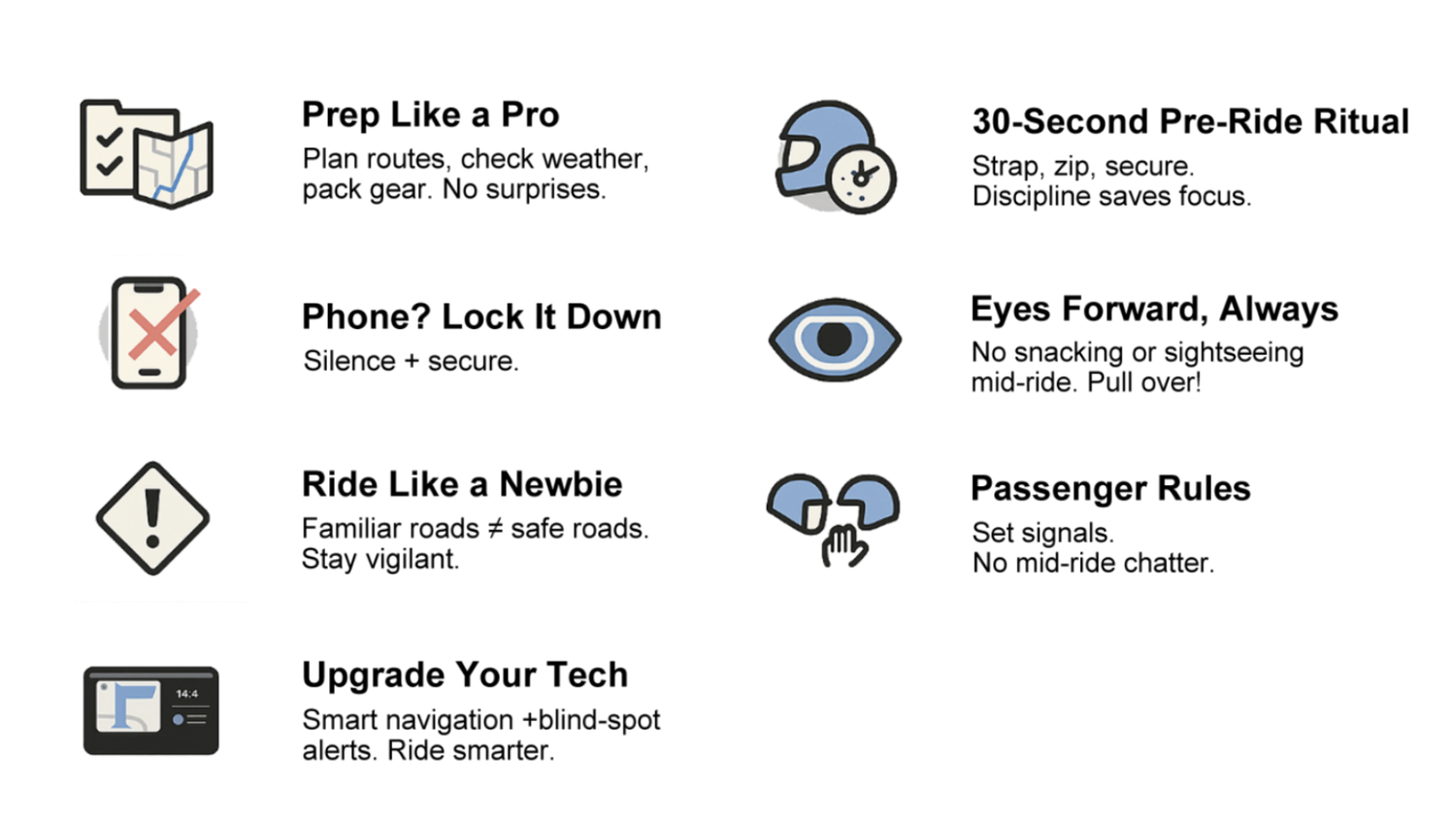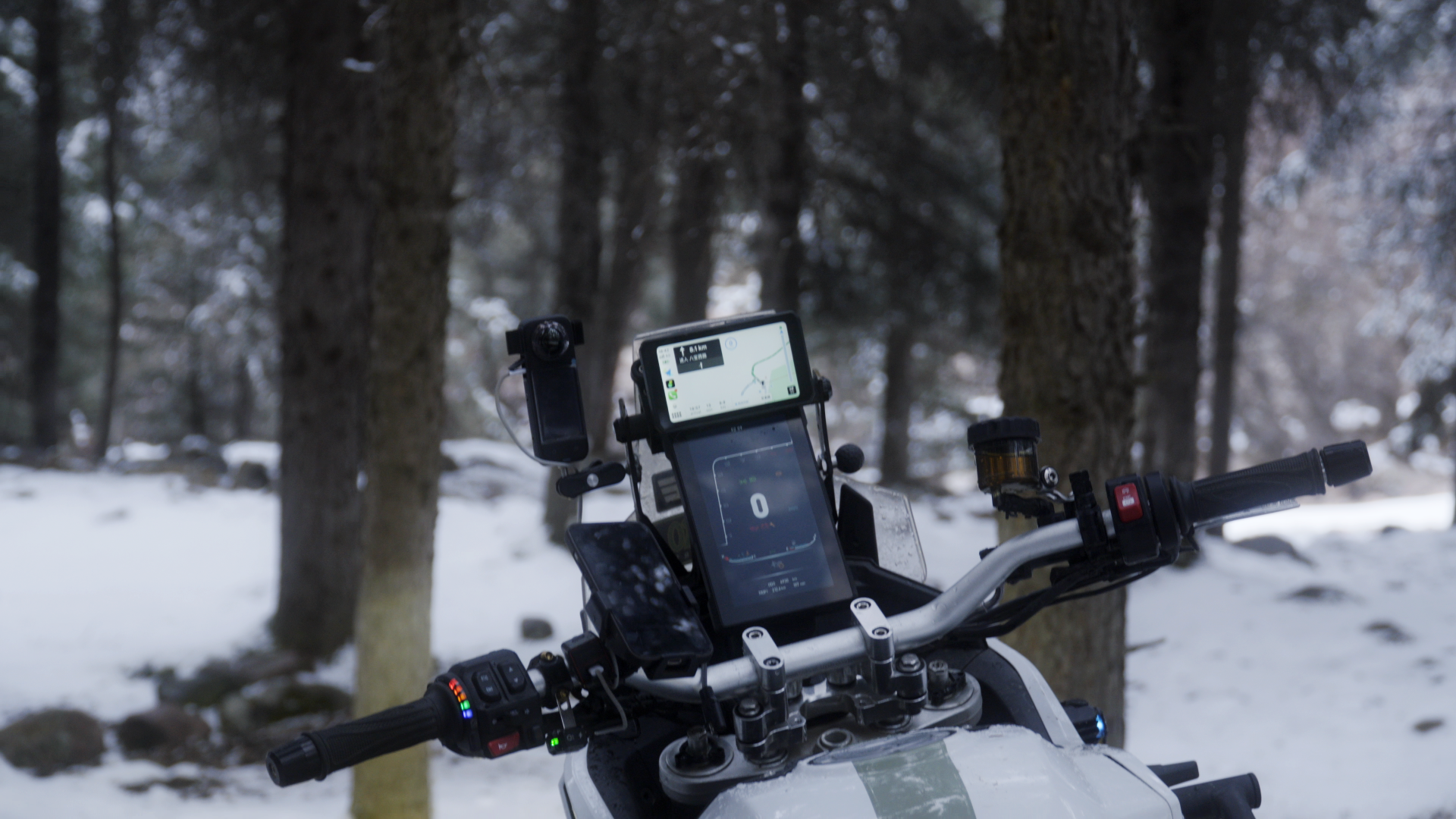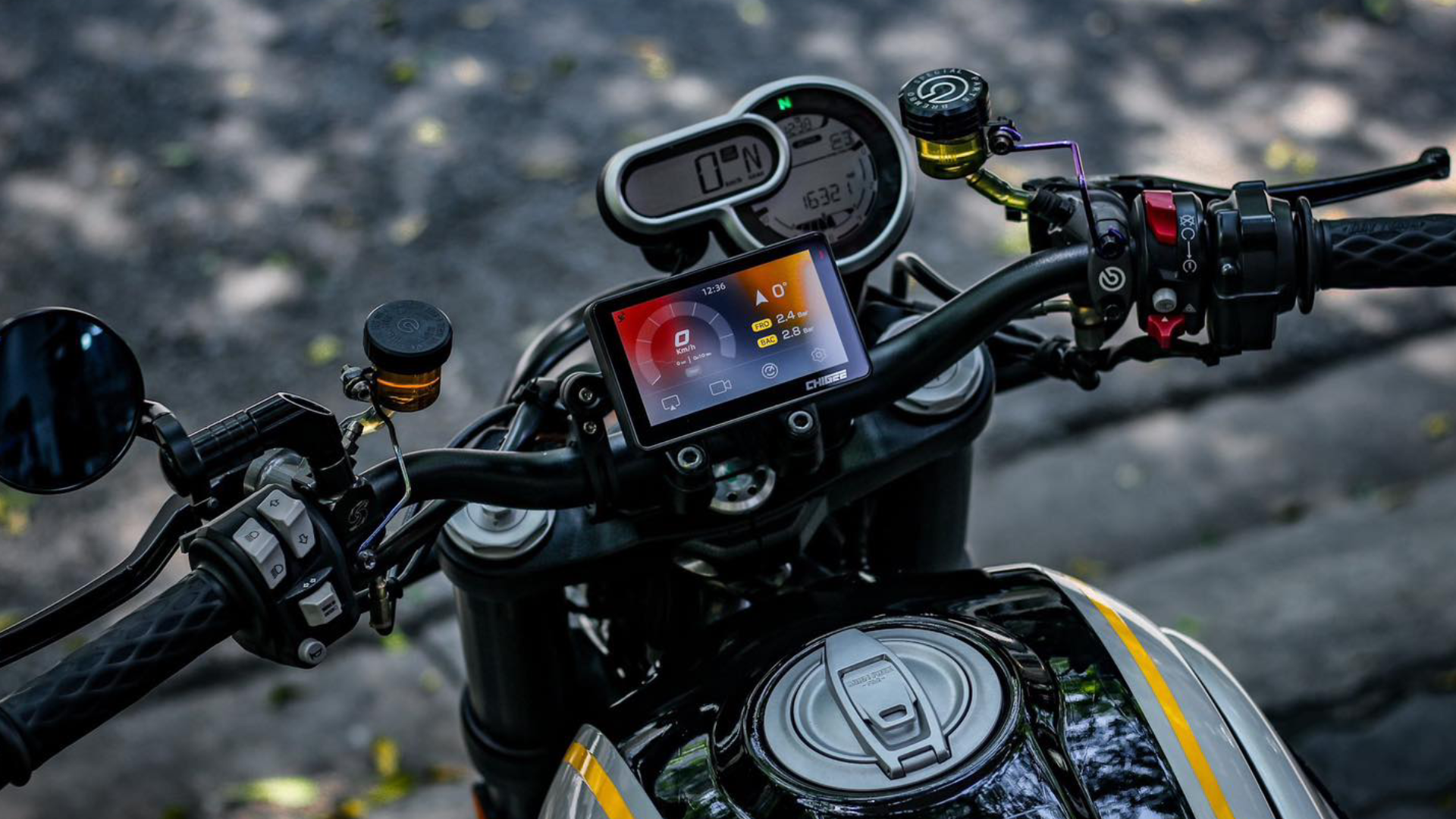Motorcycle riding is a thrilling dance between freedom and focus. However, one split-second glance at a GPS or a buzzing phone can turn that dance into disaster. And the stakes are pretty unforgiving.
In this blog, we’ll share 7 proven strategies to eliminate distractions while riding. We will be highlighting a smart system that will make your riding journey better than ever.
1. Research, Plan, and Pack
As said earlier, a motorcycle adventure thrives on freedom, but that freedom is best preserved through deliberate preparation. Yes, spontaneity can ignite excitement, but neglecting to research, plan, and pack properly introduces distractions that undermine the ride’s enjoyment and safety.
For instance, a sudden downpour becomes more than a discomfort if the rider has not checked forecasts or packed waterproof gear. Similarly, a poorly planned route might lead to unexpected road closures or poorly maintained terrain. All this changes a leisurely ride into a stressful detour.
2. Make a 30-second Pre-Ride Ritual
Consider this: you’re cruising at highway speeds when a loose helmet strap starts flapping wildly. Instinctively, you reach up to adjust it with one hand on the bars, eyes darting between the road and your chin. That diverts your focus and compromises the control of the vehicle.
This is why pre-ride rituals matter. Just spare 30 seconds to check the basics: tighten helmet straps, zip up jackets, secure gloves, and adjust mirrors before you start moving. Test luggage straps to make sure nothing wobbles or shifts mid-ride. A few seconds of discipline upfront keeps you from wrestling distractions later.
3. Phone Inside Pocket All Times
Smartphones are modern lifelines. Mounting a phone on handlebars might seem practical, but glare, vibrations, and buzzing notifications turn it into a constant distraction.
If you need navigation, wait for a dedicated system (we’ll get to that). For calls or messages, silence your phone and stash it in a zippered, vibration-proof pocket. If something feels urgent, pull over safely. A 5-minute stop every hour to check notifications beats a lifetime of “what ifs.”
4. No Eating or Sightseeing while Riding
Besides using the phone, you should avoid other activities too. The scenic views or a quick snack might feel like harmless indulgences, but they fracture focus in ways riders often underestimate.
For instance, gazing at mountains, lakes, or landmarks shifts your eyes – and mind – away from the road. Similarly, removing a hand from the bars to grab a water bottle or snack destabilizes your grip, especially during turns or bumps.
The safe approach is to pull over. Park safely, soak in the sights, snap photos, or enjoy a snack. This would be the best way to avoid distractions, rather than changing them into intentional, memorable pauses.
5. Ride Every Road Like It’s New
Familiar roads sometimes trick you into a false sense of security. You’ve ridden that winding mountain pass a dozen times, you know every curve, right? But complacency is a silent saboteur. You stop scanning for potholes, ignore blind corners, or push speed limits because you feel you know this stretch.
The reality is that roads are unpredictable. Gravel spills appear overnight. Potholes emerge after winter thaws. Tourists in rental cars make sudden U-turns, and cyclists stray into blind corners.
To counter this, approach every ride with vigilance. Stay alert for changes, and respect speed limits, even if your muscle memory begs otherwise.
6. Coordinate with Your Passenger
If you’ve a passenger sitting behind, their actions also affect the stability and safety of the ride. Sudden movements, improper leaning, or distractions such as pointing at scenery mid-turn can disrupt balance and focus.
Make sure to communicate with them before the ride and establish some rules/guidelines. Instruct passengers to hold your waist firmly, avoid abrupt shifts in posture, and use prearranged signals (e.g., one tap to slow down, two taps to stop). Reserve conversations for breaks or use a Bluetooth communicator for essential dialogue.
7. Get A Smart Navigation System
You’ve probably seen those digital heads-up displays in cars, where drivers navigate effortlessly via touch, CarPlay, or Android Auto. Now, brands like Chigee have introduced smart navigation systems designed for bikes—like their flagship AIO-5 Lite, a 5-inch touchscreen packed with features.
It connects to your smartphone through an app and mirrors your screen, giving you access to maps, music controls, notifications, and everything you’d expect from a car’s smart system. Alongside touch controls, everything can be managed via voice commands, so your hands stay on the bars.
The system also includes two smart cameras: one for the front and one for the rear. Both record in full HD, and the rear camera goes further by analyzing traffic behind you and providing blind-spot detection alerts.
So, if you truly want to stay safe, undistracted, and capture the thrill of the ride, one accessory we’d recommend is the AIO-5 Lite. Once you install it, your ride is no longer a tug-of-war between focus and technology – it’s pure, unbroken freedom.






Leave a comment
This site is protected by hCaptcha and the hCaptcha Privacy Policy and Terms of Service apply.